Between June 2000 and June 2008, more than 150,000 square miles of rain forest cleared in the Brazilian Amazon. Although the deforestation rate has slowed since 2004, forest loss is expected to continue in the future. Here are the drivers of deforestation in the past, present, and future possibilities in the Brazilian Amazon.
Mover Amazon deforestation in the past
Most deforestation in the Brazilian Amazon has emerged since the late 1960s when Brazil's military government began to sponsor a large-scale development program to support the colonization in the region. The plan, which sought to provide economic opportunities for the landless poor from crowded parts of the country and establish a national presence in the vast rural areas and sparsely populated, offering subsidized loans to settlers and ranchers, and funded ambitious highway such as the Trans-Amazonian highway.
While the Trans-Amazonian failed to meet targets of economic and social development, he managed to open up large tracts of rain forest land that were previously inaccessible for development. The expansion of land were cleared for cattle pasture and agriculture, low intensity short-term basis. Although the law prohibits the clearing of forests to 50 percent of resident ownership, deforestation rose from negligible to more than 20,000 square kilometers per year in the 1980s. Giant infrastructure projects - notably dams - partially covered by the multilateral development banks have also contributed to the large-scale forest loss, while logging spurred the expansion of unofficial road networks and subsidized agricultural expansion.
As the colonization scheme waned and the economy weakened in the early 1990s, deforestation rates slowed. By the end of the decade, clearing of forests is becoming increasingly industrialized, a large move with the economy as a driver of deforestation. Although clearing for cattle pasture continued to be the biggest cause of forest conversion, the emergence of mechanized soy agriculture in the area of Pará and Mato Grosso provide clues as to what the next decade the world's largest rain forest.
Driving deforestation in the Amazon today
These pie charts based on median figures for estimate levels. Please note low estimate for large-scale agriculture. Between 200-2005, soya bean oil causes a small percentage of the overall deforestation directly. However, the role of soy is quite significant in the Amazon, to replace the small landowners who then opened the forest is still virgin territory and provide a "key driver for economic and political toll road projects and new infrastructure, which accelerate deforestation by other actors," according to Philip Fearnside. Also important to realize that deforestation is not a degradation. Logging affects the same areas of broad, but not directly lead to deforestation.
Deforestation continues driven by factors similar to the 1990s, although since 2000, the annual forest clearing has shown an increase in tight correlation with commodity prices, especially soy and beef, which has benefited from the almost destruction of livestock due to foot and mouth disease, as well as agricultural innovation that has transformed a barren soil acidity in the area into land suitable for soy farms. The more land that Amazon used as agricultural land, rising prices for commodities have become the driving of the opening hutan.Ekspansi in this area is supported by financial incentives - including subsidized loans - and the "Growth Acceleration Program" (Program for the Acceleration of Growth - PAC) Brazil valued at 43 billion dollars, an initiative to finance construction of roads, ports, pipelines, hydroelectric dams, and various other infrastructure improvements. Under the PAC, many areas of the Amazon will be opened for development, improving the viability of soybean, palm oil, logging, and beef production in areas that were previously isolated.
Livestock
Clearing for pasture for livestock is the largest driver of deforestation in the Amazon, accounting for more than two-thirds of annual forest clearing in recent years. Traditionally such land has been used for low intensity grazing, primarily as a vehicle for speculating on appreciating land prices, but this is changing. Capital inflows in recent years, combined with the eradication of foot-and-mouth disease and improved infrastructure, has lead to the emergence of intensive operations with six to eight times the number of cattle per hectare. These trends have spurred Brazil's rise to become the largest exporter of beef in the world. Today the country has more than 200 million head of cattle and slaughterhouses in the Amazon, with production of more than 40 percent, according to a study in 2008 by the Amigos da Terra Amazonia Brasileira. 96 per cent growth in country's herd size since late 2003 have occurred in the Amazon.
A wave of soy and cattle prices recently may cause an increase in forest fires. Table annual deforestation for the years 2007-2008 will not be released until August 2008.
Soybean
The expansion of soybeans in the Brazilian Amazon, 1990-2005
Total deforestation and area of soybean cultivation across the Amazon region of Brazil. Overall soybean cultivation causes only a small portion of deforestation, though its role is accelerating. Further, soybean expansion and the associated infrastructure development and farmer displacement is driving deforestation by other actors. Note: some soybean farms are established on already degraded rainforest lands and neighboring cerrado ecosystems. Therefore it would be inappropriate to assume the area of soybean planting represents its actual role in deforestation.
Annual deforestation rates and annual expansion of soy in the Amazon region of Brazil, 1990-2005. Please note that in 1995-1996 and 1998-1999 is negative and does not appear in the charts. Graphs based on Brazilian government data.
Soybean plantations in the Amazon has expanded rapidly in recent years due to increased infrastructure in the area and rising demand for vegetable oils for food production, industrial, and biodiesel. Since 1990 the area planted with soybeans in Amazonian states has expanded at a rate of 14.1 percent per year (16.8 percent per year since 2000) and now covers more than 8 million hectares. Despite the Amazon's largest soy companies have had a ban on the processing of soybeans from newly deforested land in July 2006, soy is nonetheless seen as an important indirect driver of deforestation in the Brazilian Amazon by driving up land prices and creating an impetus for infrastructure improvements that promote forest clearing. In areas where soil and topography like for mechanized soy farms, rain forest land is usually cleared for small-scale farms and then sold to soy producers two to three years later. Farmers then move to another area, and spurring deforestation.
Opening by small-scale land owners
Land clearing by small-scale land owners remains a significant source of new deforestation in the Brazilian Amazon. Despite the efforts of the federal government recently to curb deforestation in the "Arc of Deforestation", at the same time also promote colonization in the Amazon. Agencies including INCRA and SUFRAMA resettle thousands each year who then clear forest for agriculture or to sell to developers.
Deforestation
Deforestation continues to be a key component in land-use change in the Brazilian Amazon. Although deforestation as well as through the clearing of forests for timber is rare in the Amazon due to the dispersed nature of valuable trees, deforestation leads to large-scale forest degradation in the region. Estimated than the area logged in the Amazon each year could exceed the extent that is deforested. Logging also significantly increases the likelihood that forest lands will eventually be opened to other uses, including small-scale agriculture, industrial farms, or cattle pasture. Logging in fact often subsidizes subsequent development activities.
Plantation
The Amazon rainforest is sometimes cleared for the establishment of pulp and paper mills, wood and fiber production. In 2006, Brazilian companies planted 627,000 hectares of forest industry, an increase of 13% from 2005.
Mining
Mining in the Brazilian Amazon presently results in limited deforestation due to crackdowns on illegal miners, known as garimpeiros. The pig iron industry may have the greatest role as a driver of deforestation in the mining sector by consuming wood to produce charcoal to fuel steel production.
Hunt
Deposits of carbon in forest land suitable for various crops (below). Taken from the Woods Hole Research Institute's Readiness For REDD: A Preliminary Global Assessment Of Tropical Forested Land suitability For Agriculture
Although hunting does not cause deforestation, this could have an impact on forest ecology. The large number of wildlife taken from the Amazon every year - which is more widely used to meet the market demand rather than local consumption - has resulted in "empty forests" in some areas. The sections and areas near logging and mining are particularly affected.
With growing world demand for agricultural commodities produced in the Amazon, the region is increasingly affected by drought, fragmentation, and forest fires, all of which become more and more are in poor to climate change. The synergistic impact of these pressures, coupled with the emergence of new feedstock, the entry of palm oil development, and sustainable expansion of infrastructure, providing the big picture about the future of the Amazon.
The future of the Amazon
Market
The reason the opening of the land in the Amazon is a compulsion: cheap land and rising demand for commodities driven by a wave of China and the growing interest in biofuels. These factors have helped Brazil become an agricultural superpower in the field - exporters of beef, cotton, coffee, orange juice, soy, and sugar of the world's largest, outside of other products - in less than a generation. Amazon landowners have seen their land values double every 4-5 years in areas that a decade ago were pristine rainforests. Market led to deforestation and will continue in the future, although the two can speed up the development of this process: oil palm and the next generation of biofuels based on ethanol technology selulosid.
Palm oil Amazon
The market price for crude oil and vegetable oil from January 2003 to December 2007. The data obtained from FAOSTAT and World Bank. Agricultural potential for soy, coconut, and sugarcane in the Brazilian Amazon (above).
The announcement in July 2008 that the Land Development Malaysian FELDA would establish 100,000 hectares (250,000) of oil palm plantations in the Brazilian Amazon is staggering - 2.3 million square kilometers of Brazilian rain forest is suitable for plantation crops of edible oils.
Today little commercial palm oil is produced in the region because of the traditional nature of Brazilian farmers and pest problems, but the entrance of industry-leading Malaysian producers could become a model and quickly increase palm oil's visibility as a new form of land use. As an oil seed that produces the highest market, palm oil will likely offer better financial returns than cattle ranching and mechanized soy farms, the dominant agricultural activities in the Brazilian Amazon, and will employ a larger number of workers (oil palm plantations employ roughly one worker per 8-10 ha, whereas a single cowboy can handle 4,000-5,000 head of cattle grazing on hundreds of acres of land).
Expansion of oil palm in the Amazon will likely be facilitated by infrastructure projects are underway in the region, including road construction, port expansion, and new hydroelectric projects. Oil palm producers may also benefit from a "logging subsidy" in which wood is produced from an area of land to help cover losses from the construction of a plantation. Before the rise in palm oil prices recently, logging has become a key element of the profits of oil palm plantations in Southeast Asia.
Ethanol selulosid
Although ethanol has not selulosid into something real, biotechnology companies have issued large amounts of money for research and development. Once the technology is perfected, the Amazon can fall victim to the beginning of a wave of large-scale forest conversion for energy feedstock. Assuming a yield of 70 gallons of ethanol per ton of dry biomass, razing the rainforest as feedstock could generate 15,000 gallons of ethanol costing $ 30,000-40,000 per hectare. One million hectares of land can produce 7 billion in profit. The land could be replanted with fast-growing feedstock for future production.
The big picture
Based on history, Amazon has proven resilient to climate change, human disturbance on a large scale by pre-Columbian populations, and periods of fire and extreme drought during millennial like el Niño. Even so the onslaught of world pressures that affect the Amazon was different. Never before has the region experienced the simultaneous impact of forest loss and degradation of large-scale, fragmentation, forest fires, and climate change.
Researchers are working to understand the potential impact of climate perubagan the world's largest rain forest. Some examples show that some parts of the Amazon will experience elevated temperatures and less rainfall, while other regions will get more rain, but the debate is far from settled when it comes to predicting the sensitivity and responsiveness of the region's ecosystems to elevated CO2 levels.
Map of the Amazon in 2030, showing damage caused by drought, logging, and forest clearing, the climate is estimated to last 10 years was repeated in the future. See text for further details. PPT rain. Map from Nepstad et al (2008).
Little is known about changes in the Amazon today only bring a little comfort. Massive clearings created by cattle pasture and soy farms suck moisture from surrounding forest fragments, while winds blow down trees, thinning the canopy and allowing sunlight to reach the forest floor. This dries leaf litter and kills trees. Dying trees drop leaves and branches, creating tinder for knee-high fires and burning of forests that survived the clearing of land for farming nearby. While these fires are small, they cause significant damage to the ecosystem not fireproof. Three fires are repeated in a period of several years can wipe out entire forests.
As vegetation goes up in smoke, rain-generating capacity in the forest is reduced - as much as half the moisture in some parts of the Amazon is recycled through evapotranspiration. Fewer trees mean less rainfall, while thick smoke from the fires is known to inhibit cloud formation and reduce rainfall. This effect is not confined to local areas. Research conducted by Roni Avissar of Duke University suggests that a change in the Amazon will provide a wider impact, with deforestation affects rainfall from Mexico to Texas and the Gulf of Mexico.
How these changes will compound and affect the Amazon in the long term is unclear - some projections are dire, and others not so. But all raise concern for those trying to protect the forests.
Map of soil suitability for mechanized agriculture in the Pan-Amazon region. The ban covers the slopes (more than 2%), the risk of flooding and poor soil (ultisol, hidromorfik soil, sand, and text for further details). Map from Nepstad et al (2008).
In 2003, a simulation by Peter Cox and colleagues at the Hadley Center for Climate Prediction and Research alarm and controversy when they predicted the "death" of the Amazon rain forest significantly by mid-century and the virtual collapse of the ecosystem in 2100. This forecast, which evaluated only the impact of rising atmospheric CO2 concentrations on temperature and precipitation in the region, has since been eclipsed by the examples, forecasting an even more accelerated due to the interaction of climate and land-use change. A study released earlier this year by Daniel Nepstad and colleagues forecast that 55 percent of Amazon forests will be "cleared, logged, damaged by drought, or burned" in the next 20 years if deforestation, forest fires, and climate trends continue to grow quickly. The damage will release 15-26 billion tons of carbon into the atmosphere, adding to a feedback cycle that will worsen both warming and forest degradation in the region. Worryingly, Nepstad says this scenario is a conservative one - forest loss and emissions could be far worse.
Nepstad and other scientists point to the 2005 drought as the direction in which Amazon is heading. Drought, which was more recently linked to the warming in the Atlantic than in El Niño, was the worst in memory. After the rivers dried up, remote communities will be isolated and commerce will slow to a stop. Thousands of square kilometers of land burned for months, releasing more than 100 million metric tons of carbon into the atmosphere.
Although it seems inevitable to the Amazon burning, converted into cattle pasture and soy farms, or turned into savanna by climate change, emerging trends suggest that there is reason to believe that Amazon could avoid the worst. In a future beset with uncertainty over impact of global warming and massive shifts in the international economy, is the same driver who holds the key to saving the Amazon.
(By : Rhett A. Butler, Translate from http://world.mongabay.com)
(By : Rhett A. Butler, Translate from http://world.mongabay.com)






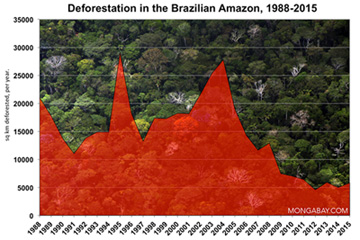
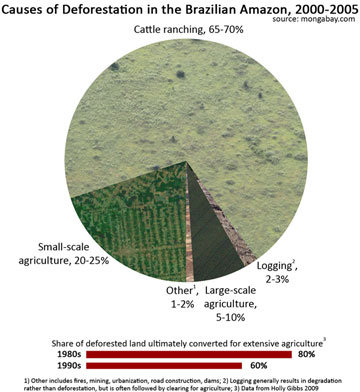
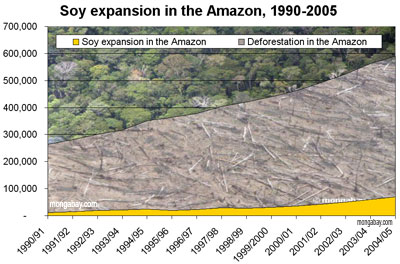
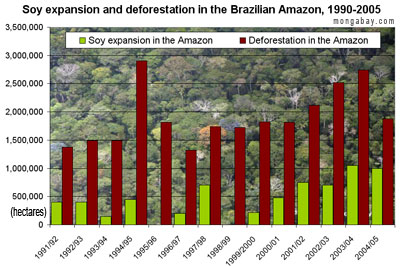
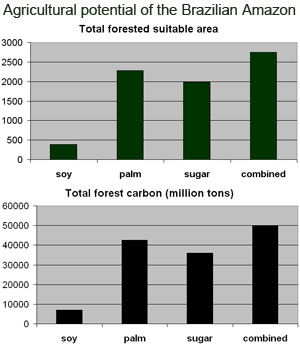
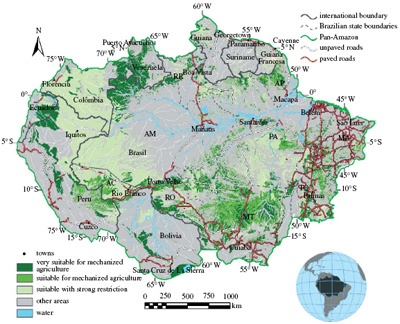
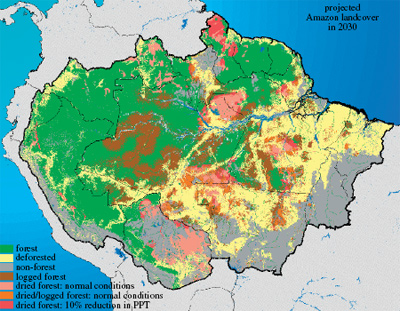
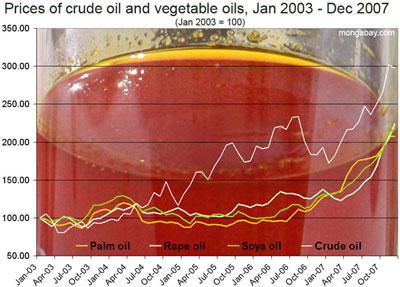

0 komentar:
Post a Comment